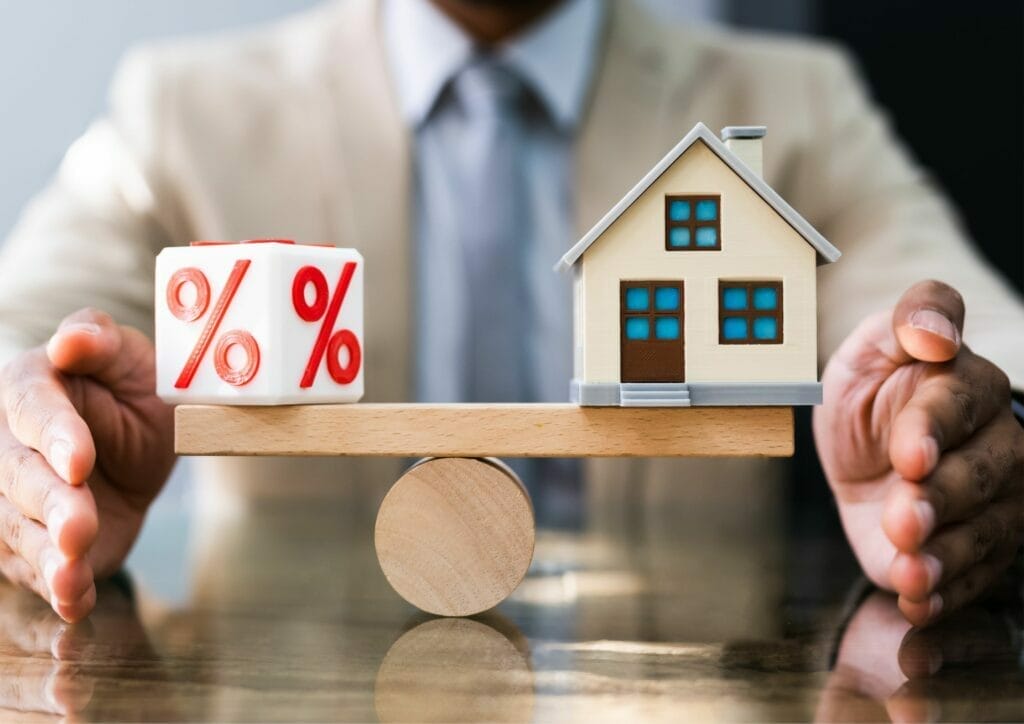
Interest Rates and Cap Rates: How do they impact commercial real estate (“CRE”)?
Commercial real estate is a complex investment, and while there are many factors to consider, this post will discuss one of the most critical components -“interest rates and cap rates” and the impact of rising interest rates on the capitalization rate, aka cap rates on commercial real estate investments. Lastly, we will also provide tips on staying ahead of the curve in today’s market.
Table of Contents
Capital Flows
The first thing to understand is that interest rates are just one piece of the puzzle regarding real estate investment. Many other factors, such as the availability of capital, can impact prices and investment decision-making. That being said, interest rates are still an important consideration.
The reason interest rates matter is that it affects the cost of borrowing. When interest rates are low, it’s cheaper to borrow money, which means that investors can put more money into their CRE projects and potentially see higher returns. It also means buyers can afford a lot more because the cost of capital is cheap. On the other hand, when interest rates are high, it becomes more expensive to borrow money. This can lead to lower returns on investment and make CRE less attractive than other investment options and for buyers to ultimately pull back from the market because the cost of capital is not cheap, and it minimizes your buying power.
Interest rates also affect the cash flow. When interest rates fall, more money tends to flow into CRE projects. This is because investors are looking for ways to invest their money to provide them with the best returns. However, when interest rates are high, less money flows into operating expenses. This is due to the fact that investors are looking for other investment options to give them better returns.

Relationship between Interest Rates and Cap Rates
The relationship between interest rates and cap rates is a complicated one. To grasp this relationship, it is important to understand that there is an inverse relationship between interest rates and price, and cap rates will often move in unison with interest rates.
To break it down, when interest rates are low, prices will typically go up because the cost of borrowing money is cheap. With cheap money, buyers can become a lot more bullish in their buying and as a result forces cap rates to compress. When cap rates compress in a market, it often indicates that the market is hot.
When interest rates are high, prices will generally come down as the cost to borrow becomes expensive. Because if it costs more to borrow and might mean additional equity, buyers become a bit more apprehensive in their purchase. When this occurs, this organic reset to the market often will push cap rates up. This often signals that the market has cooled off.
What is a Cap Rate?
The capitalization (cap) rate is the annual rate of return — yield — produced by the operations of an income property, stated as a percentage of the market price.
To determine the cap rate, the seller divides the property’s net operating income (NOI) into the asking price. For example, consider a property with an NOI of $100,000. The seller’s asking price is $1.3 million. The property’s cap rate is 7.6% ($100,000 / $1,300,000).
The cap rate can be used as a barometer of the market’s perceived risk in an asset. In general, the safer the property, the lower the cap rate. The more risk associated with a property, the higher the cap rate. Cap rates are driven by a number of factors including: property type, property market, tenants, current occupancy, property condition, and the risk-free rate.
Higher Cap Rates
Overall, the higher the cap rate, the riskier the investment. That is, a high cap rate means your asset price is low, which typically points to a riskier investment.
So, proceed with caution. A property with a high cap rate might not be the best investment for you if you’re not in a position to tolerate excessive risk.
It is important to remember that cap rates can vary significantly from one market to another, so it is important that you compare to other market cap rates in your area, as they can vary significantly.
Lower Cap Rates
Lower cap rates indicate that a property is less risky and the asset price is high. While this may not signal a great opportunity, it’s oftentimes low due to it being in heated market conditions that have driven pricing up and forced cap rates to compress.
In recent years, cap rates have declined on a number of asset classes, reaching historic lows in some markets. This has led to increased competition among investors and higher prices for properties.
It’s important to note that a low cap rate does not necessarily mean a bad investment if there is a way to increase your top-line revenue – call it value add.

What Are Interest Rates?
Interest rates are the cost of borrowing money. Regarding commercial real estate investment, one interest rate is more important than all others- the so-called “risk-free rate.”
Risk-Free Rate
Like any investment, commercial real estate returns are driven by perceived risk. The more risk that a property has, the higher the potential return. The less risk, the lower (but more stable) the return. But, the tricky thing about risk is that it exists in both an absolute and relative sense. This means that each property has its own unique risks, but it also means that these risks are measured relative to the risk found in other investment options.
The risk-free rate is the interest rate paid on a 10-year treasury bill. It is referred to as the “risk free rate” because repayment of a 10-year Treasury debt obligation is backed by the full faith and credit of the United States government. In other words, it is considered to have as little risk as an investment can have. So, if an investor can earn the rate paid on a 10-year Treasury, which is “risk free”, it follows that they should be compensated with a higher return for any investment that has more risk than a 10-year Treasury. This is where a commercial property’s capitalization rate or “cap rate” comes into play.
How Interest Rates Impact CRE
Changes in interest rates have a profound impact on CRE transactions. When rates continue rising, it effectively increases the borrowing cost, which can price some buyers out of the market.
Conversely, lower rates make borrowing cheaper, which can spur more deal activity. In addition, changes in interest rates can also impact investor confidence. For example, if rates rise too quickly, it can cause panic among real estate investors, leading to a sell-off in CRE assets.
At the same time, sustained low-interest rates can create fears of inflation and lead to fears of an impending economic downturn. As a result, interest rate movements can significantly impact CRE values and transaction activity.
How do Interest Rates affect Property Values?
Property values are determined by various factors, including location, the condition of the property, and demand. However, one of the most important factors is interest rates. When interest rates are low, buyers can get loans with lower debt service payments, and oftentimes less equity is needed, making it easier for them to afford the property. As a result, demand for properties tends to increase, creating competition in the market and thus driving up prices.
Conversely, when interest rates are high, it minimizes buying power and demand decreases. This can lead to a decrease in property valuation. Therefore, interest rates play a significant role in determining property values.
Key takeaways
The relationship between interest rates and commercial real estate (CRE) is complex, and it can significantly impact property values and transaction activity. For investors, it is important to carefully monitor changes in interest rates and how they might impact the market.
With careful research and due diligence, you can find investment opportunities that offer the potential for high returns in today’s and tomorrow’s market.
About The Author

Jesse Shemesh
Disclaimer
Please note that Point Acquisitions is not a tax expert or tax advisor. The information on our blogs and pages is for general informational purposes only and should not be relied upon as legal, tax, or accounting advice. Any information provided does not constitute professional advice or create an attorney-client or any other professional relationship. We recommend that you consult with your tax advisor or seek professional advice before making any decisions based on the information provided on our blogs and pages. Point Acquisitions is not responsible for any actions taken based on the information provided on our blogs and pages.
1031 Exchange Capital Gains Tax Deferral
According to a 2021 report by the National Real Estate Exchange Services (RES), over 240,000 1031 exchange transactions were completed in the United States, totaling $100 billion. This impressive figure underscores the role of 1031 exchanges in the real estate…
Read More1031 Exchange Benefits
As of Q4 2023, the national vacancy rate for all commercial property types in the United States sat at 9.2%, according to CBRE’s latest insights and research. This represents a slight decrease compared to the previous quarter and suggests a…
Read More1031 Exchange Legal Considerations: A Must-Read Guide
You’re in the right place if you’re considering a 1031 exchange for your commercial real estate investments. Whether you’re a seasoned investor or just dipping your toes into the market, understanding the legal landscape of 1031 exchanges is key to…
Read More

